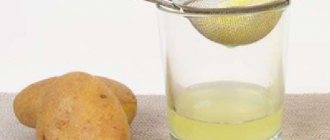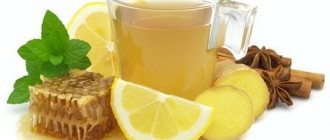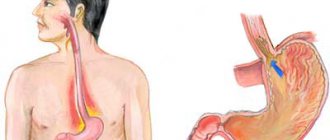A duodenal ulcer is a chronic disease that is a defect in the lining of the organ. Unlike erosive formation, it is deeper, affecting the submucosal and muscle tissue. Ulcerative wounds can be of different sizes - from a match head to a large apple. The prevalence of the pathology is quite high and in some regions is 15 percent. The disease occurs more often in men. Folk remedies are very popular in the treatment of duodenal ulcers. With their help, it is possible to accelerate tissue healing and normalize digestion processes.
Traditional medicine
To treat problems associated with the digestive organs, along with traditional ones, there are many ancient, time-tested methods. They are widely used along with drug therapy and dietary nutrition. The role of folk remedies for duodenal ulcers comes down to relieving inflammatory processes, improving tissue regeneration, and restoring the normal functioning of the organ. Treatment with folk remedies includes a huge number of recipes, some of which are especially effective.
Sea buckthorn oil
Sea buckthorn has an excellent healing effect. The oil envelops the affected area of the bulb and body of the duodenum, accelerating the restoration of the mucosa. There are various options for its use:
- In the morning, waking up and without getting out of bed, drink a spoonful of sea buckthorn oil. They continue to lie down for an hour, constantly changing their position. A total of 200 ml of product is required per course. If heartburn occurs, it can be relieved with a soda solution.
- For preventive purposes, it is recommended to eat a tablespoon of honey every morning, washing it down with a sip of sea buckthorn oil after 25 minutes. The duration of the course is one year.
- Sea buckthorn oil mixed with 2% soda solution. Take one teaspoon of oil per 50 ml of liquid.
Sea buckthorn oil is easy to make on your own. After squeezing out the berry juice, the remaining peel and seeds are thoroughly dried and ground in a coffee grinder. The resulting powder is poured with olive oil and infused, stirring occasionally. After 3 weeks, the oil is ready and can be used for duodenal ulcers.
Aloe
The plant is called “home healer” and is famous for its medicinal properties. It is an effective folk remedy for treating duodenal ulcers. Grind the leaves of a three-year-old plant by passing through a meat grinder. Add honey and butter, 100 g each, to 300 g of the resulting slurry. Pour in a tablespoon of Cahors and place the mixture in a water bath until it melts completely. Take a spoon half an hour before meals. You can take this medicine with milk or soda solution. The course of admission is 1 month. After a 10-day break, repeat.
An easier way to cure an ulcer is to thoroughly mix equal parts of aloe, honey, and butter. Take one spoon three times a day before meals.
Another treatment regimen using aloe involves a combination of several products at once - a raw egg, honey (a teaspoon), a small piece of aloe without peel and a spoonful of sea buckthorn oil. They must be taken in the order listed with a time interval of 5 minutes. Eating – 30 minutes after drinking sea buckthorn oil. Honey has an antibacterial effect, aloe is excellent for healing wounds, oil helps get rid of pain, and protects the intestinal mucosa. By interacting, the products enhance each other’s effects.
Treatment with honey
Bee products are used to treat many diseases. They also help cure duodenal ulcers. The most popular hive product used in folk medicine is honey. It is stirred in warm water (35 g per glass) and the resulting solution is drunk an hour and a half before meals at high acidity and 10 minutes before meals at low acidity. The duration of such treatment with honey is 2 months. During this period, you should not eat sweets. If heartburn occurs, it is recommended to drink the honey water solution with milk.
Badger fat
This remedy helps cure duodenal ulcers forever. Consume it in its pure form with water. To give it a more pleasant taste, it is recommended to mix it with a little honey. Take badger fat for ulcers once a day - before breakfast.
Flax-seed
Flax seed is a product that can restore the function of the duodenum. The seeds are soaked in water or boiling water, and they become covered with a sticky, thick mucus that protects the mucous membrane. If you eat a spoonful of soaked flaxseed every morning, you won’t have to deal with digestive problems. If you add honey, you get not only a healthy, but also a very tasty breakfast.
Flaxseed helps alleviate the patient's condition during exacerbation of the disease. Half a glass of seeds is poured into a thermos with a liter of boiling water, leaving overnight. The resulting infusion is drunk half a glass 4 times during the day.
Treatment with olive oil is no less effective for ulcers. It can reduce acidity, relieve inflammation, and normalize the functioning of the digestive system. Thanks to its vitamin E content, olive oil has a regenerating effect, accelerating the healing of ulcers.
Take the oil by mixing it with egg white. To prevent exacerbation, mix olive oil with sea buckthorn in equal parts and drink one teaspoon twice a day for a month.
Propolis
Bee propolis is one of the most popular folk remedies for duodenal ulcers. Its wound-healing and antibacterial properties have long been used in the treatment of many diseases. There are many recipes using this bee product:
- Dissolve propolis in water (at the rate of 2 g per 2 tablespoons of water) and drink in the morning. The effectiveness of the drink will be much higher if you add a little honey.
- Mix propolis with linseed oil in equal parts. Take a teaspoon in the morning before meals.
- Alcohol tincture of propolis is diluted in milk (a teaspoon of tincture per 100 ml of milk). Drink on an empty stomach in one go.
Propolis can be used in combination with other treatment methods.
Celandine
Considering that duodenal ulcers are caused by bacteria, antibacterial plants will help cope with the disease. One of them is celandine. You can prepare an alcohol tincture from it. Grind 100 g of raw materials and pour a bottle of vodka (0.5 l). The medicine is infused for 14 days and taken 10 ml before meals. A water infusion of celandine is no less effective. To prepare it, just pour a teaspoon of crushed plant into a liter of boiling water. 10 minutes is enough to infuse. After straining, add honey for taste.
Herbal baths
After the duodenal ulcer has healed, medicinal baths using medicinal herbs are recommended. They allow you to avoid recurrent disease and are an excellent addition to the therapeutic course. To prepare the procedure with thyme decoction, brew the dry herb with boiling water (200 g of raw material per 5 liters of water) and leave for several hours to infuse. After straining, pour into a bathtub filled with warm water. Take the procedure before bed, its duration is 20 minutes. To prevent the disease from recurring, a bath with a medicinal decoction should be taken up to three times a week.
It is necessary to treat duodenal ulcers with folk remedies only after consulting a doctor and under his supervision.
Treatment with St. John's wort
Medicinal herbs for stomach and duodenal ulcers are used everywhere. The medicinal plant St. John's wort is popularly considered a herbal antibiotic. In addition to diseases of the gastrointestinal tract, the plant is able to cope with almost any acute and chronic intestinal diseases.
In the treatment of gastric and duodenal ulcers, the medicinal plant has proven itself to be the best. The composition contains saponins, plant resins, tannins, amino acids and vitamins. The main effects are astringent, wound healing, anti-inflammatory and antibacterial.
Recipes with St. John's wort
- Preparing the infusion. A water infusion is prepared from 15 grams of herb, dried and crushed, poured with a glass of boiling water. Infuse the herb in a thermos, leaving it overnight. In the morning, strain the infusion, add hot water to a volume of 200 ml. Take a quarter glass half an hour before meals. The duration of the therapeutic course is 2 weeks. If after 2 weeks pain and discomfort in the stomach are noted, it is allowed to take a break for a week and then undergo a two-week therapeutic course with St. John's wort infusion.
St. John's wort flowers for treatment - In order not to waste time on daily preparation of aqueous infusion of St. John's wort, you can prepare an oil extract of the medicinal plant. This will eliminate the need to constantly heat the resulting infusion. It is possible to prepare the medicine only in the warm season, since the plant is required fresh for the recipe.
- Rinse fresh St. John's wort herb thoroughly under running water, dry in the shade in the fresh air, and chop. The resulting mixture is placed in a glass container. Volume is at your discretion. There is no need to compact plant materials. The container is filled to the top with unrefined vegetable oil - take olive oil or sunflower oil. The top of the jar is closed tightly with a lid and hidden in a dark, cool place. It is necessary to keep the jar for 10 days and strain. You should take herbs for duodenal ulcers until there is a lasting improvement in the patient’s condition.
- When treating with St. John's wort, you should not consume chocolate, coffee, or strong alcoholic drinks.
- Since St. John's wort causes increased sensitivity to sunlight, it is best to avoid excessive exposure to the open sky.
Recipes for treating duodenal ulcers at home
Potato juice
Potato juice is used as a wound healing and anti-inflammatory agent.
Potatoes are a healthy and valuable vegetable; if cooked correctly, they will saturate the body with essential nutrients such as potassium, magnesium, phosphorus, and iron. A drink made from raw potatoes has been used in home medicine for a long time, as it brings the desired effect and helps to quickly recover from illness. Drinking has wound-healing, anti-inflammatory, and enveloping properties.
To prepare a healing potato drink at home, you need to take whole healthy tubers, peel and grind them in a juicer. Since potatoes contain a lot of starch and darken when exposed to oxygen, the freshly squeezed drink is drunk immediately. Drinking can be done with the addition of carrot juice, then the patient will no longer suffer from heartburn, reflux, flatulence and constipation. Drink 2 tablespoons 10 minutes before meals. The course of treatment is at least six months. But you need to remember that self-medication is dangerous and before you start drinking such a drink, you need to consult a doctor.
Honey for treatment
Beekeeping products have high antibacterial properties.
To treat duodenal ulcers, medicinal beekeeping products—honey and propolis—are used. This folk method has powerful antibacterial, wound-healing, and regenerating properties. But we must remember that honey is safe when the patient has increased production of hydrochloric acid.
The recipe for a honey-based product is as follows: honey and butter are taken in equal proportions. These ingredients are combined, mixed thoroughly and placed in the refrigerator to cool the mixture. Take 1 tablespoon each time before meals. The course of treatment ranges from a month or more, depending on the type of lesion the patient has. Honey is also taken as an independent product, eating 1 tablespoon each time before eating with a glass of water at room temperature.
When using a beekeeping product such as propolis at home, you need to prepare it correctly. For duodenal ulcers, it is not advisable to use a recipe for preparing a mixture with alcohol, since such a tincture will irritate erosions and the condition will worsen. The best option in this case would be a base based on butter. To prepare such a product, take 150 g of propolis and mix it with soft oil in a ratio of 1:9. Take 1.5 teaspoon every day before meals. The course of treatment with propolis is from 1.5 months, which can be extended as needed.
Treatment of rectal ulcers with folk remedies
The large intestine is the final link in the long process of digesting food, providing the body with necessary substances and microelements, protecting against poisoning by toxins of internal organs. Treatment of the colon, like any human organ, requires an individual approach from a gastroenterologist.
Why do disorders in the digestive tract begin, what symptoms accompany this, how to properly treat various diseases of the large intestine? The answers to these questions are provided in this article.
Location and structure of the large intestine
The complete tract of the large intestine is divided into the abdominal cavity and the pelvic region.
The organ consists of six intestinal sections - rectum, sigmoid colon, descending colon, transverse colon, ascending colon and cecum.
The length of the large intestine is 0.8-1.4 m, depending on gender differences and the age of the patient. The average diameter ranges from 4.5-8.2 cm.
The main difference from the small intestine is determined by:
- The presence of longitudinal muscles in the intestinal walls.
- Bulging of the walls.
- Fatty appendages.
- Gray color.
- Increased diameter.
The role of the large intestine in human health
Good microflora in the intestines is necessary to destroy harmful bacteria, stop rotting, and allow the body to obtain the necessary amino acids, vitamins and microelements from the incoming food.
At the final stage of digestion, residual digestion of food, absorption of residual water and salt solutions, and removal of human waste occur.
The main result of complex biochemical processes is the creation and maintenance of strong immunity.
The integrity of the mucous membrane, good peristalsis (muscle contractions) and maintaining the balance of the colon microflora are the main things in the prevention and treatment of the disease. Regular body care is important not only on the outside.
Internal general cleaning will help to avoid the appearance of cancerous tumors, heart problems, kidney diseases, liver diseases, allergies, asthma, and arthritis.
Digestive problems are the cause of the development of 72 diseases in patients.
The onset of the disease is accompanied by specific symptoms.
Constipation, diarrhea
If a person has stool (defecation) once a day, there is no reason to worry.
If this happens once every 3 days or more, or vice versa 2-3 times a day, we can talk about a violation of the intestinal evacuation ability, possibly the development of hypomotor dyskinesia.
In this case, the processes of absorption of nutrients and digestion do not work 100%. An additional reason may be diseases of other digestive organs, whose work must be performed by the large intestine.
Pain, bleeding during bowel movements
The presence of constant pain indicates the development of inflammation. Ignoring this signal and lack of treatment leads to colon cancer. If you eat low-quality food, food is quickly eliminated without digestion. You should also be alarmed by a constant feeling of expansion in the abdomen, increased gas production, and rumbling.
The appearance of blood discharge during bowel movements indicates internal bleeding, possibly due to a rupture of the colon, and their color indicates an arterial or venous origin.
This is a serious reason for an endoscopic examination of the digestive system.
Anemia
Anemia occurs in the case of constant or acute bleeding from internal organs. With intestinal cancer, anemia occurs due to chronic blood loss and disruption of the formation of blood cells - platelets, leukocytes, erythrocytes.
Crohn's disease
An inflammatory bowel disease that can affect the entire digestive tract, from the esophagus to the rectum, is called Crohn's disease. The causes of the disease are not fully understood; the main factors are considered to be infection and disruption of the behavior of autoimmune (protective) cells.
The disease affects all layers of the intestine and the blood vessels passing nearby.
- Frequent diarrhea, feeling of fullness in the abdomen, flatulence.
- Sharp acute pain accompanied by intestinal obstruction.
- Feverish state at high temperature with the formation of fistulas in the anal area.
In the absence of treatment, metabolism is disrupted, heart pathology, anemia, and osteoporosis develop. Against the background of a deficiency of microelements, vitamins, and electrolytes, the body becomes depleted. The result of advanced disease is impaired joint strength, skin rashes, ulcers, and visual defects.
In the treatment of Crohn's disease, hormonal drugs are used, exacerbations are smoothed out with the help of antibiotics. To exclude recurrences of the diagnosis, drugs of the sulfa group are used.
During treatment, alcohol, spices, and foods with fiber are completely eliminated, and the amount of fat and milk products is reduced.
It is recommended to use grated food, high-calorie protein foods, and porridge with water.
Ulcerative colitis
A chronic disease of the large intestine with dysfunction of the mucous membrane is called ulcerative colitis. As a result of the disease, bleeding from the mucous membrane begins. With a prolonged process, the growth of tumors and polyps is possible.
- Frequent changes of constipation and diarrhea.
- Weight loss, deterioration in health.
- Bleeding from the anus.
In the treatment of ulcerative colitis, drug therapy is combined with diet. In case of exacerbation, the patient takes hormonal drugs. A long course of sulfonyl drugs is required for complete recovery. The diet is limited to irritating foods and coarse fiber. Dairy products are completely excluded.
Ischemic colitis
During damage to the mucous membrane of the large intestine, caused by damage to the vessels of the intestinal walls, ischemic colitis occurs. The consequence of the inflammatory process is the destruction of the mucous membrane. Atherosclerosis, diabetes mellitus, thrombophlebitis provoke these changes.
- Traces of blood in stool.
- Delayed pain in the left side of the abdomen after eating.
- The occurrence of bleeding.
- Anemia, loss of appetite and weight.
Source: https://tsitologiya.su/zheludok/lechenie-jazvy-prjamoj-kishki-narodnymi-sredstvami
Honey with walnuts
Not only healing, but also tasty. It is prepared from flower honey, finely ground walnut kernels and butter, taken in equal parts (300 g each). The components are placed in an enamel bowl and heated for 20 minutes in the oven at a temperature of about 100 °C. The well-mixed mass is taken one tablespoon three times a day half an hour before meals.
If the peptic ulcer is not in an advanced state, the medicine helps to get rid of the disease in the shortest possible time.
Source: depositphotos.com
Therapy with calendula
Calendula, or as the flower is popularly called, marigold, is a bright orange-colored flower well known as an anti-inflammatory. Few people know what positive effect calendula has in the treatment of gastric and duodenal ulcers. Competent and regular treatment of duodenal ulcers with medicinal herbs will help you forget about the symptoms of gastric disease for a long time. The plant has antimicrobial properties, disinfectant and anti-inflammatory, antipyretic and analgesic. Calendula is excellent at healing wounds and ulcers.
To make calendula oil you will need fresh marigold flowers. According to researchers, oil extract is much more effective compared to water tincture. To prepare an oil extract from calendula, you need to place 30 g of fresh calendula flowers in 100 g of any unrefined vegetable oil. Then place the resulting mixture in a water bath and heat over low heat to 80 degrees. Soak the oil with flowers in a water bath for 2 hours. Then the oil is cooled and left to infuse for 24 hours. After this infusion is filtered. Take a teaspoon before each meal for duodenal ulcers.
You can mix the resulting calendula oil with honey and milk. The drink should be the first thing a person with a diagnosed stomach or duodenal ulcer drinks per day. To prepare a herbal drink, you need to heat a glass of milk, pour a spoonful of butter and a spoonful of honey into it. The mixture is mixed, drunk on an empty stomach in the morning for stomach and duodenal ulcers. This combination heals wounds on the gastric mucosa and prevents the appearance of new ulcerations.
Remember that such treatment is not applicable in the acute stage of the ulcerative process. First you need to achieve a remission phase. You should also not take marigold tincture with alcohol orally - ethyl alcohol is harmful to the gastric mucosa, which is already susceptible to harmful effects. The condition may worsen.











